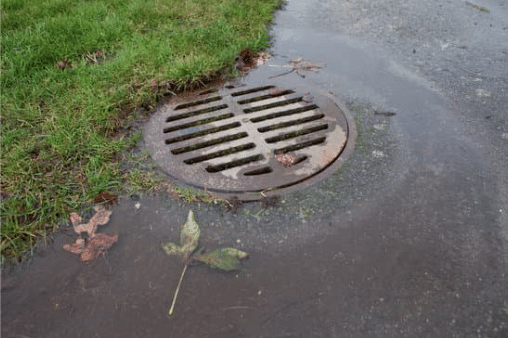
Kevin Albrecht, PE
Water Resources Engineer

It’s a win-win when stormwater design can take advantage of the latest green infrastructure practices, supporting local ecosystems and potentially reducing the square footage of your project set aside for stormwater management.
Burkett Engineering stays on top of these innovative green technologies to give you more options when planning your next development project. The following trends and advancements might be worth incorporating into your next build.
Permeable Pavements
Porous asphalt, concrete and pavers allow more rainwater to be absorbed into the earth, reducing stormwater runoff. These materials also filter metals, oil, fertilizers and pollutants while absorbing nutrients, such as nitrogen and phosphorus.
Permeable pavements reduce overall flooding. Rainwater has to go somewhere, and the more that your site can absorb, the less run-off that needs to be addressed in the site plan. For example, if you build a large permeable parking lot, your site will require a smaller stormwater pond.
The initial materials and installation costs may be higher, but this investment typically pays off over time. Permeable pavements require less maintenance, cleaning and repairs. In some cases, the use of these materials eliminates the need for separate drainage systems. Moreover, these environmentally friendly materials typically have a much longer lifespan. A regular concrete parking lot may last 30 to 40 years, whereas permeable concrete can last for 60.
Bioretention Systems
Bioretention systems act much like stormwater ponds, but are designed with plants to mimic nature-made ponds.
One example is a bioswale, a shallow, gently sloping landform that directs rainwater to a drainage system. A rain garden also serves the same function. The surrounding landscape around these man-made ponds is strategically sloped to funnel water here to be absorbed. Smaller versions can also be included within the design of your parking lot. With all designs, the benefits are many.
Water Quality
● Pollutant Removal
Plants will absorb additional nutrients and run-off, reducing the amount of wastewater. These will also help absorb the fertilizer run-off from lawns, which would otherwise feed the algae in any downstream waters.
● Groundwater Recharge
By acting like a natural pond, this system filters stormwater, allowing it to percolate back into the ground where it will, over time, rejoin the groundwater supply.
● Peak Stormwater Flow Reduction
These systems will also reduce and deter the maximum amount of water that might surge through a site during a hurricane or other storm.
● Runoff Reduction
Bioretention systems help manage stormwater by infiltrating and evaporating it, reducing runoff volume, minimizing flooding, and enhancing water quality.
Ecological Benefits
● Biodiversity Enhancement
Like a natural pond, a biorentention space provides habitat for wildlife and allows for increased biodiversity. This benefit can be further strengthened by working with one a landscape architect to ensure the right mix of plants to match your site’s goals. Burkett Engineering partners with landscape architects with experience in these matters.
● Reduction of Heat Generation
Cities, with their masses of paved areas, are known for generating and trapping in heat in what’s called the Urban Heat Island Effect. By adding green spaces, we help break up this problem. Plants and ponds evaporate water and help cool the surrounding areas — of utmost importance in Central Florida.
● Additional Greenspace
These ponds and systems provide areas that are aesthetically pleasing, and can be designed to allow for employee or public use, when appropriate.
Biofiltration Systems
Stormwater ponds can only provide so much stormwater treatment. The next line of defense is a biofiltration system. Rather than allowing the water to soak back into the ground, these systems rely on filters such as sand or superior materials to polish and clean the water, allowing it to reach purification levels great enough that it can be discharged back into the environment.
With filtration systems, developers can make the runoff water as clean as they want. This typically means choosing different filter media. Biologically-activated media, or BAM, can break down pollutants on the microbial level. These porous materials allow microorganisms to colonize and aid in the filtration work. BAM choices are superior to sand and include granular activated carbon, or GAC, as well as activated filter media, or AFM.
This is an increasingly popular option due to Florida’s new, more stringent criteria required of water quality enhancement areas (WQEAs) as per House Bill 965, now Chapter 2022-215, Laws of Florida. Under this new legislation, WQEAs generate credits based on the extent to which they filter pollutants, and these credits can be sold to government entities. It’s one more reason that it’s worth taking the time to explore green infrastructure solutions while you’re still in the nascent stages of project planning.

